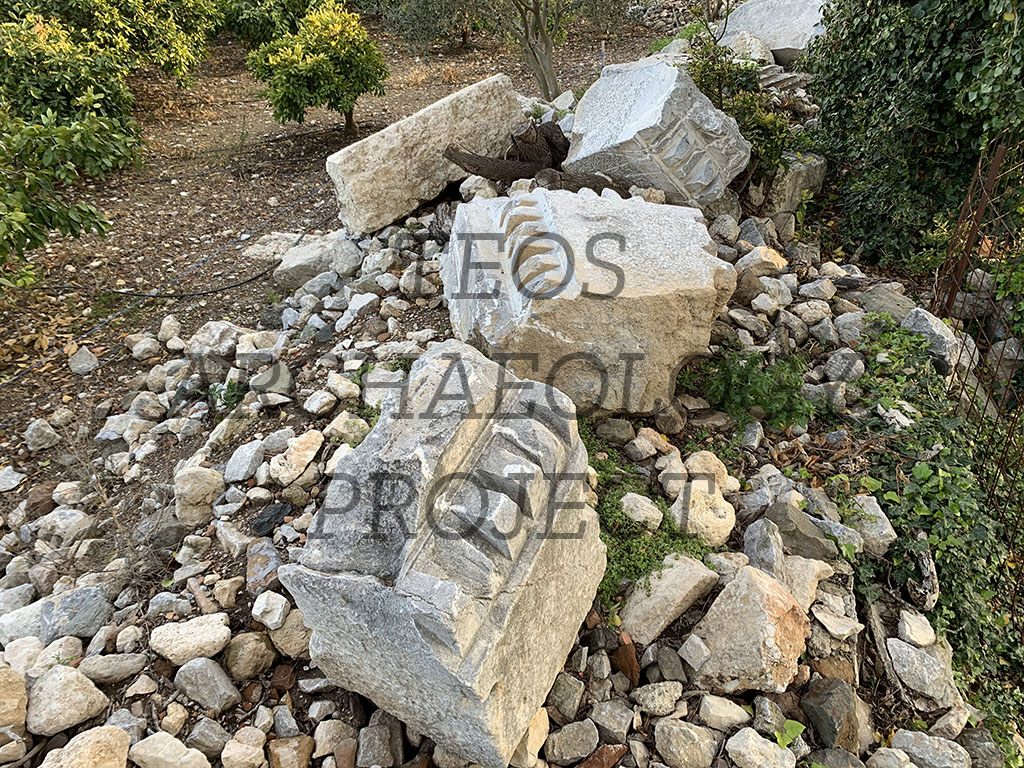
Cornice blocks of the entablature of the Temple of Demeter and Kore in Teos (Kadıoğlu, 2021, 252, Figure 113)
Both the archaeological and epigraphic data obtained in the ancient city point to the existence of a temple dedicated to the cult of Demeter and Kore. An inscribed Doric architrave made of grey Teian marble found on the garden wall between Parcels 25 and 26 in Plot 89, approximately 250 m southeast of the Roman theatre and 200 m northeast of the bouleuterion, constitutes the most telling evidence of the existence of the Temple of Demeter and Kore in Teos. The Greek inscription, whose beginning and end are missing, reads ‘[N.N.], son of … had dedicated] the temple to the [Eleusinian] goddesses Demeter and Kore [as well es to the peo]ple.’ This architrave is the first archaeological evidence of a temple built in honour of the Eleusinian goddesses, as well as the epigraphically documented festivals of the Thesmophoria.
With the completion of the missing parts of the Greek building inscription on one complete and one fragmentary architrave block, it was possible to reconstruct a temple façade with at least three architraves, providing us with an important clue about the temple plan and elevation. The Temple of Demeter and Kore in Teos might have had a tetrastyle prostyle plan, as did the Temple of Demeter in Miletus, the Temple of Zeus Sosipolis in Magnesia on the Meander, and the Temple of Zeus in Pergamon, or a distyle in antis plan (antae temple), with two columns between the antae, as in the Temple of Dionysus in Miletus and the Temple of Demeter in Pergamon. It is not yet known whether the naos mentioned in the inscription had an opisthodomos, as did the temple at Magnesia, on top of a pronaos and cella. Forthcoming geophysical prospections and archaeological excavations will give more precise information about the location and plan of the temple.
